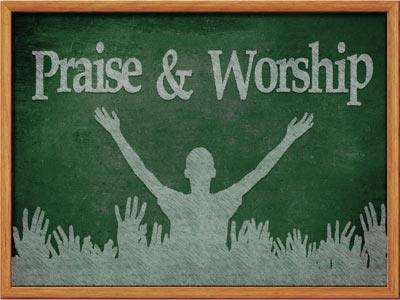-
Worship - How To Not Be Struck Dead
Contributed by Gregg Barbour on Nov 28, 2017 (message contributor)
Summary: The ancient practices of worship when priests would enter the holy of holies to meet with God required them to be found spotless...this sermon relates the tabernacle and tent of meeting to today’s forms of worship.
(Intro Video-ark of the covenant-Holy of Holies)
Ok, Some of you are probably wondering how Noah’s ark fit inside this small box. Did they shrink it? What’s up with that? So, I have to clear up some of your confusion. The ark of the covenant and Noah’s ark are two different things. Noah’s ark was of course, the boat made by Noah when the great flood came. The ark of the covenant, however, was a sacred container that the stone tablets holding the Ten Commandments were placed into. In the days of King Solomon, the temple was built. The temple was built as a place for God to reside. 2 Chronicles 5 talks about how after the temple was built, the ark was placed in the Most Holy Place. Let’s listen to verses 4-14, “4 When all the elders of Israel had arrived, the Levites took up the ark, 5 and they brought up the ark and the Tent of Meeting and all the sacred furnishings in it. The priests, who were Levites, carried them up; 6 and King Solomon and the entire assembly of Israel that had gathered about him were before the ark, sacrificing so many sheep and cattle that they could not be recorded or counted. 7 The priests then brought the ark of the LORD’s covenant to its place in the inner sanctuary of the temple, the Most Holy Place, and put it beneath the wings of the cherubim. 8 The cherubim spread their wings over the place of the ark and covered the ark and its carrying poles. 9 These poles were so long that their ends, extending from the ark, could be seen from in front of the inner sanctuary, but not from outside the Holy Place; and they are still there today. 10 There was nothing in the ark except the two tablets that Moses had placed in it at Horeb, where the LORD made a covenant with the Israelites after they came out of Egypt. 11 The priests then withdrew from the Holy Place. All the priests who were there had consecrated themselves, regardless of their divisions. 12 All the Levites who were musicians—Asaph, Heman, Jeduthun and their sons and relatives—stood on the east side of the altar, dressed in fine linen and playing cymbals, harps and lyres. They were accompanied by 120 priests sounding trumpets. 13 The trumpeters and singers joined in unison, as with one voice, to give praise and thanks to the LORD. Accompanied by trumpets, cymbals and other instruments, they raised their voices in praise to the LORD and sang:
"He is good;
his love endures forever."
Then the temple of the LORD was filled with a cloud, 14 and the priests could not perform their service because of the cloud, for the glory of the LORD filled the temple of God.”
So, the glory of the Lord filled the temple and God has his house built in Jerusalem. The temple was broken into three parts (show pic) – the outer courts, the holy place, and the most holy place. A thick curtain separated the Holy of Holies from the Holy Place. This curtain, known as the “veil,” was made of fine linen and blue, purple and scarlet yarn. There were figures of cherubim (angels) embroidered onto it. Cherubim, spirits who serve God, were in the presence of God to demonstrate His almighty power and majesty. They also guarded the throne of God. These cherubim were also on the innermost layer of covering of the tent. If one looked upward, they would see the cherubim figures.
The word “veil” in Hebrew means a screen, divider or separator that hides. What was this curtain hiding? Essentially, it was shielding a holy God from sinful man. Whoever entered into the Holy of Holies was entering the very presence of God. In fact, anyone except the high priest who entered the Holy of Holies would die. Even the high priest, God’s chosen mediator with His people, could only pass through the veil and enter this sacred dwelling once a year, on a prescribed day called the Day of Atonement.
The picture of the veil was that of a barrier between man and God, showing man that the holiness of God could not be trifled with. God’s eyes are too pure to look on evil and He can tolerate no sin (Habakkuk 1:13). The veil was a barrier to make sure that man could not carelessly and irreverently enter into God’s awesome presence. In those days, the High Priest was allowed to visit the Most Holy Place once a year, on the Day of Atonement, to offer sacrifice for the sins of all the people. Except, when the priest entered in, he himself should be found blameless, or consecrated before the Lord. So, there was this process that he had to go through to get ready to meet with God, he had to make some meticulous preparations: He had to ceremonially wash himself 7 times, He would stay up all night the night before to meditate on the Scriptures, put on special clothing, bring burning incense to let the smoke cover his eyes from a direct view of God, and bring blood with him to make atonement for sins. Before the priest entered in, a cord was tied around his waist, and gold bells were attached. If the priest entered in, not being fully consecrated to God, he would be struck dead, and the other priests would use the cord to pull his body out.

 Sermon Central
Sermon Central



